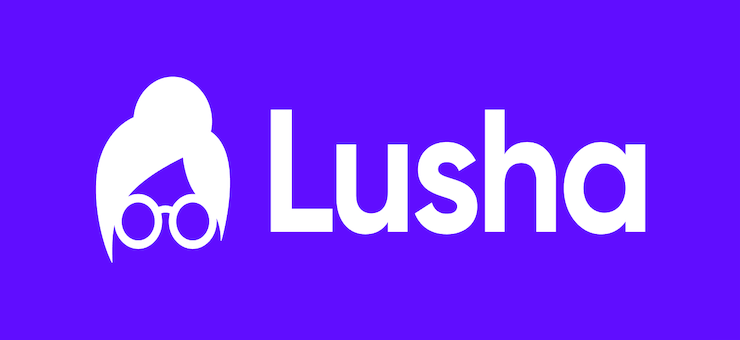
When your prospecting platform slows you down, it’s time to explore better options. Apollo has become a go‑to tool for combining B2B data with email sequences, but many teams outgrow its credit system, find data gaps in certain regions, and struggle with hidden costs. You might notice contacts bouncing, complex billing, or lackluster support. If that sounds familiar, looking at the best Apollo alternatives will help you unlock better data quality, clearer pricing, and more powerful outreach automation.
This guide highlights six platforms: Alta AI, SmartReach AI, Lusha, Reply.io, ZoomInfo, and Pubrio. All can replace or complement Apollo. You’ll learn how each tool works, what makes it unique, and how to decide which platform fits your team’s budget and workflow.
Why Look for an Apollo Alternative?
Apollo offers a combination of prospecting, engagement, and enrichment at an accessible price, but several factors prompt businesses to explore alternatives:
- Credit limitations and hidden costs: Plans seem affordable at first, but viewing direct dials, enriching contacts, or sending higher volumes quickly consume credits, leading to extra charges.
- Data quality concerns: Although the database boasts hundreds of millions of contacts, users report bounced emails and outdated phone numbers. Inaccurate records can derail campaigns and hurt the sender’s reputation.
- Customer support challenges: Reviews highlight slow response times and limited support channels. Billing disputes and auto‑renewal problems further erode trust.
- Integration and sync issues: Some teams experience delays or mismatches when syncing with CRM platforms like Salesforce or HubSpot, requiring manual fixes.
- Regional coverage gaps: Apollo’s data is strongest in North America. If you target APAC or EMEA markets, you may need a platform with deeper regional coverage.
Recognizing these limitations helps you evaluate which features you can’t compromise on, whether it’s data accuracy, AI‑driven outreach, or transparent pricing.
How to Choose the Right Sales Intelligence Platform
Choosing the right tool involves assessing your goals and workflow. As you compare Apollo alternatives, consider the following criteria:
- Database size & accuracy: Look for platforms that offer verified email addresses, direct dials, and firmographics with high accuracy rates. Larger isn’t always better if the data is outdated.
- AI & automation: Evaluate whether the tool provides AI agents or workflows that save you time, like automated research, personalized copy generation, or multi‑channel sequences.
- Pricing transparency: Determine if the vendor offers clear monthly plans or requires custom quotes. Understand how credits are counted and whether there are hidden charges for enrichment or add‑ons.
- Regional coverage: If you sell into specific regions, ensure the platform has strong coverage there. Tools like Pubrio excel in APAC, while others focus on North America.
- Integrations & usability: Assess how well the platform integrates with your CRM, email system, and other tools. Look for intuitive interfaces and short learning curves.
Keeping these factors in mind will help you select a platform that maximizes ROI.
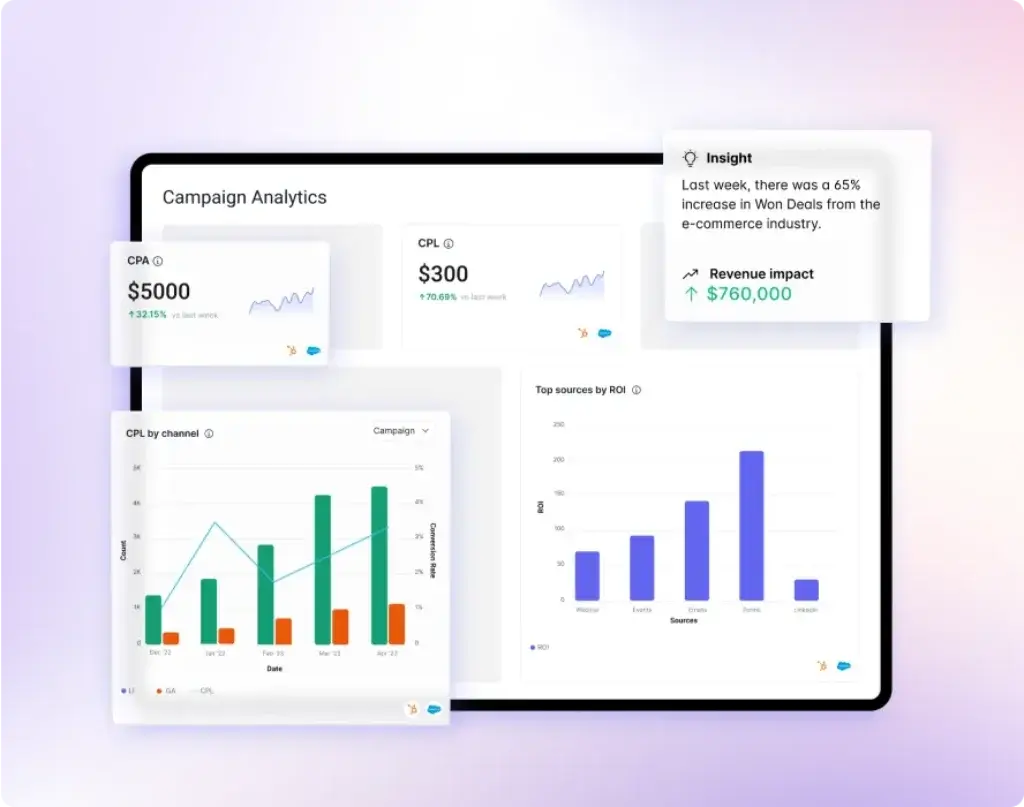
Overview
Alta AI positions itself as an AI revenue workforce designed to automate outbound pipeline building, lead qualification, and real‑time insights across your revenue functions. Instead of a single tool, Alta provides specialized AI agents that work around the clock, letting your team focus on closing deals rather than hunting for leads.
Key Features & Benefits
- Multiple AI agents: Alta includes agents like Katie (AI SDR), Luna (RevOps agent) and Alex (AI calling agent). Katie automates prospect identification, research and personalized outreach, Luna manages reporting and strategy alignment, and Alex handles inbound calls and schedules meetings.
- 24/7 automation: These agents operate continuously, ensuring you engage prospects at the right moment and never miss inbound leads.
- Seamless integrations: Alta connects with popular CRMs and communication tools to synchronize data, reducing manual entry and ensuring a unified workflow.
Pros & Cons
Positive
✅ Specialized AI Agents for Every Role
✅ Precision Targeting with Intent Data
✅ Native Outreach with AI Personalization
✅ Built-in Revenue Analytics
Negative
❌ Limited non-CRM integrations
❌ No SMS or phone dialer support
❌ Less Flexible Than No-Code Tools
❌ Premium Features Require Higher Tiers
Pricing
Alta AI offers simple, transparent pricing:
- Free Plan: Basic outbound automation, limited credits.
- Growth Plan: Starting around $49–$79 per month, depending on credit usage.
- Pro / Business Plans: Higher credit limits, advanced AI workflows, multi-channel outreach, team features.
- Custom Enterprise Plan: Volume credits, SSO, workspaces, advanced admin controls.
Prices may vary based on credit usage and team size, but Alta AI is generally more affordable than Apollo and ZoomInfo.
Ideal Use Cases
Alta AI is best for:
- Teams wanting AI-driven outbound automation.
- Businesses needing multi-channel sequences (email, LinkedIn).
- SDR teams looking for predictive scoring and intent.
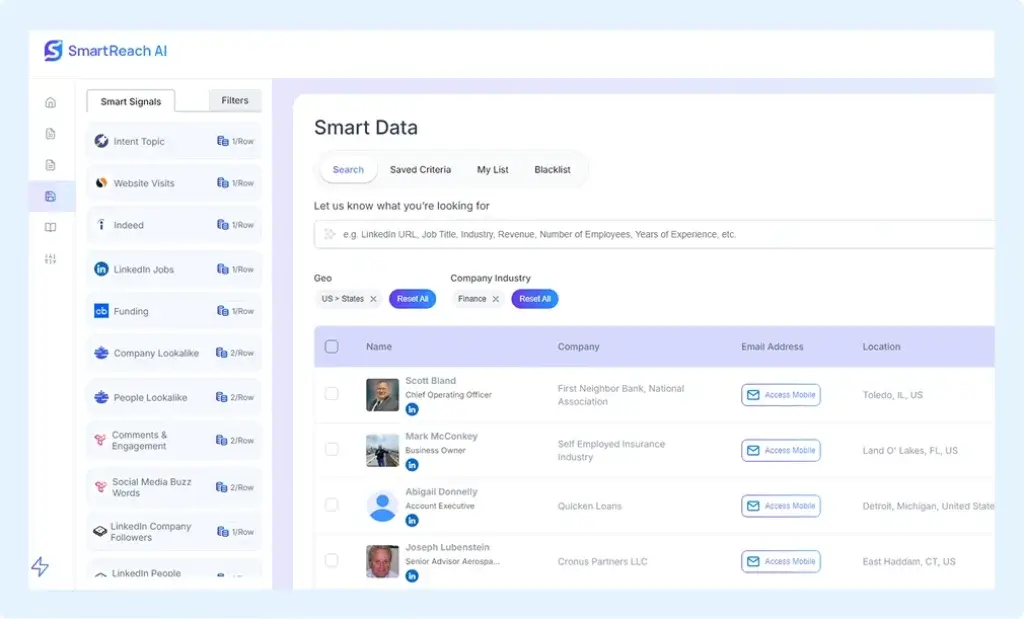
 | Black Friday Deal
| Black Friday Deal
Limited-Time Black Friday Deal: Get SmartReach AI for Life!
Grab the exclusive Lifetime Deal before it’s gone – includes monthly outreach tokens + early access perks.
Overview
SmartReach AI is a modern outreach platform that combines lead generation, research automation, and multi‑channel engagement into one system. Instead of juggling multiple tools, you can build targeted lead lists, research accounts, and run sequences from a unified dashboard.
Key Features & Benefits
- Built‑in data & research: SmartReach integrates with providers like Ocean.io, BuiltWith, SimilarWeb, Crunchbase, and StoreLeads to generate fresh, verified leads. You can filter by industry, tech stack, funding or company size, and the platform enriches data automatically.
- Smart AI agent: An AI agent replaces manual research by surfacing company details, technographics and intent signals. It analyzes buyer behavior to determine when prospects are most likely to buy, so you reach out at the right moment.
- Multi‑channel sequences: You can run personalized sequences across email, LinkedIn, WhatsApp, and more. Conditional logic lets you create branching paths based on prospect behavior.
- Flexible pricing: Plans start at around $29 per user per month, with mid‑tier and enterprise options that add multi‑mailbox support, API access and advanced analytics. A 14‑day free trial allows you to test the platform before committing.
Pros & Cons
Positive
✅ AI-Powered List Building
✅ Smart AI Research Automation
✅ Buyer Intent Signal Integration
✅ Strong Multichannel Support
Negative
❌ No Built-In Email Sending
❌ CRM Syncing Requires Setup
❌ No Built-In Dialer for Voice Outreach
Pricing
SmartReach AI offers flexible, channel-based pricing:
- Email Outreach Plan: From ~$29/month per user.
- Multichannel Plan (email + LinkedIn + WhatsApp + calls): From ~$49/month per user.
- Agency Plan: Supports multiple client workspaces.
- Add-ons: Email warm-up, deliverability toolkit, unlimited mailboxes.
Pricing is transparent and competitive, especially for teams prioritizing deliverability.
Ideal Use Cases
SmartReach AI is best for:
- Teams prioritizing email deliverability.
- Agencies managing multiple client campaigns.
- SDRs that need multi-channel outreach with strong inboxing.
- Businesses replacing Apollo’s sequencer with a more reliable system.
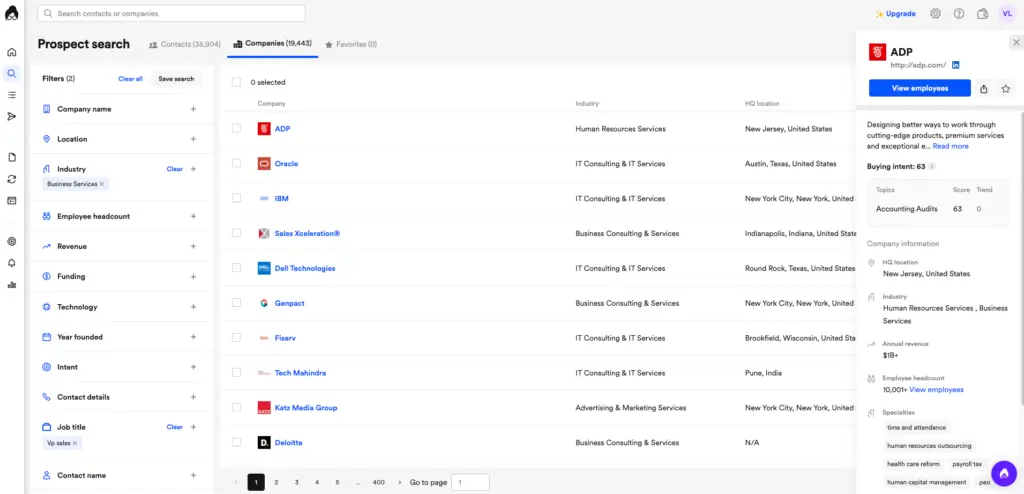
Overview
Lusha started as a recruitment tool but evolved into a robust sales intelligence platform. It specializes in providing verified emails and direct dials, making it easier for sales and marketing teams to reach decision‑makers quickly. You can access Lusha via a web interface, browser extension or API, and it integrates seamlessly with CRMs like Salesforce and HubSpot.
Key Features & Benefits
- Data enrichment & accuracy: Lusha cross‑references multiple sources to fill missing details, delivering around 90 % email accuracy and 80 – 85 % phone accuracy. The platform enriches company records with firmographics, funding rounds, technographics and buying intent signals.
- Prospecting tools: Advanced filters and Boolean search let you build targeted lists by job title, seniority, industry, revenue, technology stack and more. Intent data highlights companies actively researching solutions, helping you prioritize.
- Browser extension: Lusha’s Chrome/Firefox extension reveals hidden contact details on LinkedIn or company websites. Bulk reveal lets you unlock multiple contacts from a single page.
Pros & Cons
Positive
✅ User‑friendly interface
✅ Accurate data
✅ Time‑saving tools
✅ Intent data and AI insights
Negative
❌ Limited free credits
❌ Higher costs for advanced features
❌ Data coverage gaps
❌ Dependency on external platforms
Pricing
Lusha uses a credit-based model with simple tiers:
- Free Plan: 5 credits/month.
- Pro Plan: ~$39/month for 40 credits.
- Premium Plan: ~$69/month for 100–150 credits.
- Scale / Enterprise Plans: Custom pricing, higher credit volumes, API access.
Lusha is significantly cheaper than ZoomInfo and Apollo for pure contact data.
Ideal Use Cases
Lusha is best for:
- Reps who need fast, verified direct dials.
- SDRs relying heavily on LinkedIn prospecting.
- Small teams that need affordable lead data.
- Businesses wanting a lightweight alternative to Apollo’s database.
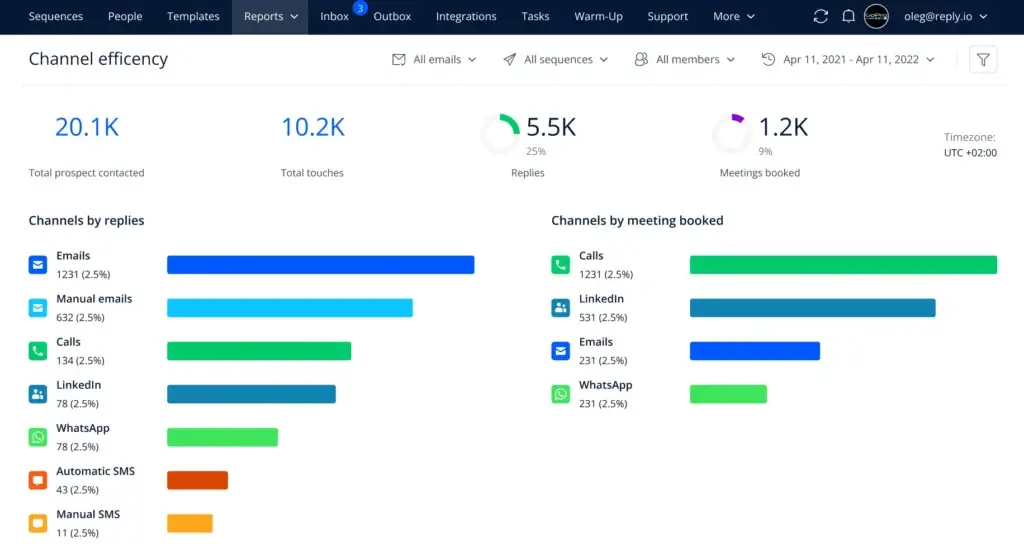
Overview
Reply.io is an AI‑powered sales engagement platform that automates outreach across email, LinkedIn, SMS, WhatsApp, phone, and more. It combines a robust sequencing engine with built‑in B2B data and an intelligent SDR assistant (Jason AI) to help you personalize communication at scale.
Key Features & Benefits
- Multi‑channel sequences: Create complex sequences that mix emails, LinkedIn touches, calls and messages. Conditional logic directs prospects along different paths based on opens, replies, or clicks. You control timing and cadence to suit prospects’ schedules.
- AI personalization: Reply’s Jason AI assistant drafts sequences based on your ideal customer profile. It inserts personalized variables like name, job title, and company, and generates icebreakers or follow‑ups in multiple languages.
- Deliverability tools: The Email Deliverability Suite monitors SPF, DKIM and DMARC records, warms up new inboxes, and validates email addresses. Custom tracking domains and deliverability dashboards protect your sender reputation.
- Reporting & analytics: Channel‑specific dashboards display open rates, clicks, replies, meetings booked, and time‑to‑response. Managers can monitor team performance and adjust sequences based on data.
- Integrations & data sourcing: Reply integrates with over 100 CRM and sales tools, including Salesforce, HubSpot and Pipedrive. The built‑in Findy extension and database of over a billion contacts reduce dependency on third‑party data providers.
Pros & Cons
Positive
✅ Ease of use
✅ Powerful automation
✅ AI‑driven personalization
✅ Deliverability tools
Negative
❌ Pricing complexity
❌ Learning curve for advanced features
❌ Software bugs and browser extension glitches
❌ Limited integrations with certain tools
Pricing
Reply.io pricing is based on feature bundles:
- Email Search Plan: ~$59/month.
- Multichannel Plan: ~$99/month per user.
- Agency Plan: ~$166/month per user.
- Extras: AI assistant, deliverability tools, LinkedIn automations.
Reply.io is priced similarly to Apollo’s paid tiers but with more advanced sequence automation.
Ideal Use Cases
Reply.io is best for:
- Teams focused on advanced sales engagement.
- SDRs needing AI-assisted outreach.
- Companies requiring LinkedIn automation integrated with email sequences.
- Agencies with high volume outreach needs.
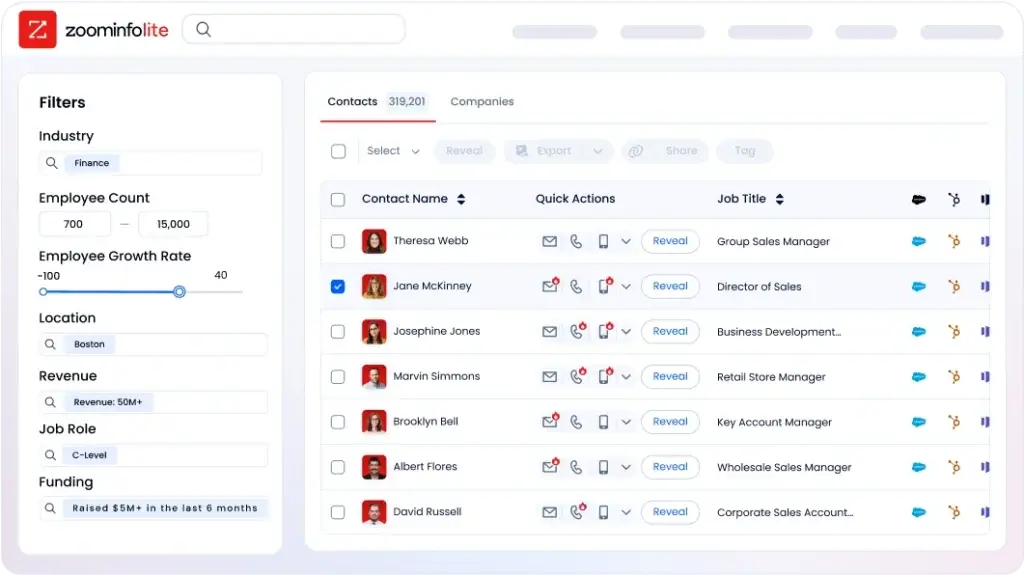
Overview
ZoomInfo is a go‑to‑market intelligence platform known for its massive B2B database and suite of products: SalesOS, MarketingOS, OperationsOS, and TalentOS. It offers contact and company data, intent signals, enrichment and engagement tools, making it popular with enterprise teams looking to build predictable pipelines and shorten sales cycles.
Key Features & Benefits
- Extensive database: ZoomInfo houses over 260 million professional profiles and 100 million company records. Advanced filters allow you to target leads by job title, seniority, industry, revenue, technographics, and more.
- Intent data and buyer signals: The platform monitors website visits, content downloads and third‑party activity to identify companies actively researching topics related to your product. Weekly reports highlight engaged accounts so you can prioritize outreach.
- Modular products: SalesOS focuses on prospecting and engagement, MarketingOS supports demand generation, OperationsOS handles data cleaning and enrichment, and TalentOS assists recruiting. You can choose one or combine multiple products.
- Deep integrations: ZoomInfo integrates with Salesforce, HubSpot, Outreach and other tools, offering features like conversation intelligence, analytics and automated workflows.
Pros & Cons
Positive
✅ Extensive database
✅ Powerful filtering
✅ High data accuracy in the US
✅ Rich intent data
Negative
❌ High price point
❌ Complex credit system
❌ Steep learning curve
❌ US‑centric data
Pricing
ZoomInfo uses fully custom quotes:
- Entry Plans: Start at ~$15,000/year.
- Advanced Packages: $24,000–$25,000/year.
- Enterprise Plans: $40,000+/year.
- Add-ons: Engage, Copilot, Chorus, WebSights, OperationsOS.
Costs increase based on seats, data credit volume, and required add-on modules.
Ideal Use Cases
ZoomInfo is best for:
- Companies needing enterprise-grade data accuracy.
- US-based sales teams targeting large corporate accounts.
- Organizations using intent signals at scale.
- Teams with operations staff who can manage a complex platform.
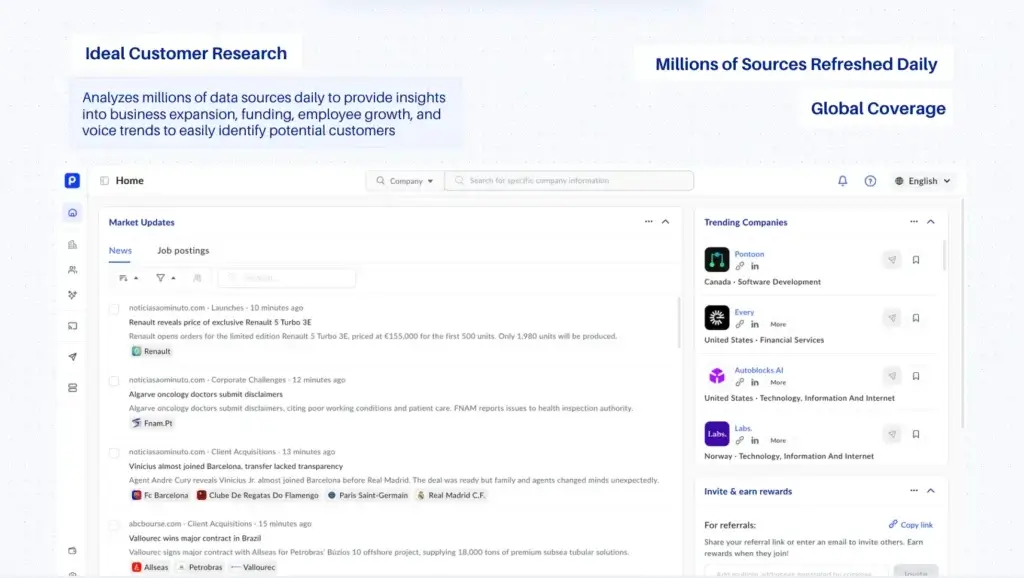
Overview
Pubrio combines global B2B data with intent signals and automated sequences, making it a compelling choice for teams targeting Asia‑Pacific markets. It offers deep regional coverage, an intent‑detection engine, and multichannel outreach tools in one platform.
Key Features & Benefits
- Massive global database: Pubrio claims access to more than one billion company profiles and 275 million contacts, with particularly strong APAC coverage. Data is updated daily and can be enriched with firmographics and technographics.
- Intent & signal detection: The platform tracks website visits, content consumption, technology adoption, hiring and funding events. These signals help you identify accounts actively researching or expanding, allowing you to prioritize outreach.
- Advanced filtering: Boolean logic and extensive filters let you build lists by industry, role, geography, tech stack and recent signals. This precision ensures you focus on accounts most aligned with your ICP.
- Multichannel outreach: Pubrio includes built‑in email, LinkedIn, WhatsApp and other messaging sequences. Automated workflows reduce manual follow‑up and improve engagement rates.
- Managed services: For teams needing help with data and campaigns, Pubrio offers managed list‑building and enrichment services.
Pros & Cons
Positive
✅ Comprehensive APAC coverage
✅ High data accuracy
✅ Actionable intent and technology signals
✅ Built‑in multi‑channel automation
Negative
❌ Learning curve for advanced filters
❌ Limited integrations (currently)
❌ Relatively new platform
❌ Credit‑based pricing
Pricing
Pubrio offers transparent and affordable credit plans:
- Growth Plan: ~$35/month for 900 credits.
- Business Plan: ~$125/month for ~4,200 credits.
- Enterprise Plan: Custom pricing for 100k+ credits and managed data services.
Pubrio is one of the most cost-effective tools for high-volume data needs, especially outside the US.
Ideal Use Cases
Pubrio is best for:
- Companies targeting APAC markets.
- Teams needing intent + multichannel automation in one tool.
- Businesses want global B2B data with deeper Asia coverage.
- SDR teams looking for a mix of data + sequences at low cost.
Comparison Table of Apollo Alternatives
The table below summarizes key differences across the six alternatives, helping you compare database size, AI capabilities, pricing and ideal customer fit.
| Feature/Plan | Alta AI | SmartReach AI | Lusha | Reply.io | ZoomInfo | Pubrio |
| Database Size | 500M+ contacts via Leadsforge (with custom agents) | Integrates with Ocean.io, BuiltWith, Crunchbase & others for verified leads | 90 % email accuracy, 80–85 % phone accuracy; strong U.S. coverage | 1 B+ contacts built‑in via Findy extension | 260 M+ professionals & 100 M+ company records | 1 B+ company profiles, 275 M contacts; deep APAC coverage |
| AI Capabilities | Multiple AI agents (SDR, RevOps, calling) for end‑to‑end automation | Smart AI agent for research and buyer intent; sequence recommendations | AI recommendations for high‑value leads | Jason AI for personalized sequences & AI SDR automation | Buyer intent signals and conversation intelligence (add‑on) | Intent detection, advanced filtering & managed services |
| Pricing Model | Custom; quote‑based | Tiered plans from ~$29/user/month; free trial | Free tier; paid plans from ~$22/month | Free trial; paid plans from $49/user/month; AI SDR from $500/month | Custom quotes; typical entry starts ~ $15 k/year | Credit‑based plans starting at ~$35/month |
| Best For | Teams seeking AI automation across outbound and rev‑ops | Sales teams & agencies needing unified research and outreach | Individuals & SMBs needing quick, accurate contact data | Mid‑size & enterprise teams needing multi‑channel engagement | Enterprises requiring comprehensive data & intent intelligence | Mid‑market & enterprise teams targeting APAC with intent signals |
Final Thoughts
Choosing the Best Apollo Alternative
Finding the right Apollo alternative depends on your goals. Alta AI is perfect if you want end‑to‑end AI agents handling outbound, RevOps, and inbound calls. SmartReach AI shines when you need unified lead research and multi‑channel engagement at an affordable price. Lusha is a simple, budget‑friendly way to get verified emails and phone numbers quickly. Reply.io offers multichannel sequencing with AI personalization and strong deliverability tools, though pricing can rise as you scale. ZoomInfo remains the enterprise powerhouse with the largest database and intent data, but it’s expensive and best suited to teams with large budgets. Pubrio is ideal for APAC‑focused growth and intent‑driven outreach, combining global data with automated sequences at a reasonable price.
Before deciding, define your non‑negotiables, whether that’s data accuracy, AI automation, pricing transparency or regional coverage, and select the tool that best meets those needs. Most of these platforms offer free trials or demos, so take advantage of them to see which interface and workflow feels most intuitive.
Frequently Asked Questions
1. Why should I look beyond Apollo for sales intelligence?
Apollo is a solid entry‑level platform, but its credit limits, hidden fees, and occasional data quality issues push many teams to search for more reliable alternatives. Exploring other options can improve data accuracy and ensure pricing matches your budget.
2. Which Apollo alternative offers the most accurate B2B data?
ZoomInfo and Pubrio offer extensive databases with verified contacts and intent signals. Lusha also delivers high email and phone accuracy, though it has fewer features. Choose based on your geographic focus and budget.
3. What’s the most affordable Apollo alternative?
Lusha and SmartReach AI provide low‑cost entry plans and free trials. Lusha’s Pro plan starts at around $22/month, while SmartReach’s basic plan is roughly $29/user/month. Pubrio’s Growth plan (~$35/month) is also accessible.
4. Which tool combines outreach automation with data enrichment?
Reply.io and SmartReach AI both blend outreach automation with built‑in or integrated data enrichment. Reply.io includes a large contact database and an AI SDR, while SmartReach partners with multiple data providers and adds a research agent.
5. Is ZoomInfo worth the high price?
ZoomInfo can be worth the investment for large enterprises that need comprehensive data, intent signals and advanced analytics. However, smaller teams often find the cost prohibitive. Consider alternatives like Alta AI or SmartReach AI if you have a tighter budget.
6. Does Pubrio only focus on Asia‑Pacific markets?
Pubrio offers global data, but its strength lies in APAC coverage. It’s ideal for companies expanding into Asia‑Pacific or those that want to leverage intent signals alongside multichannel outreach in that region.
7. Can SmartReach AI replace my CRM?
SmartReach AI provides lead generation, research and multi‑channel sequences but isn’t a full CRM. You’ll still need to manage pipelines and long‑term deals in a separate CRM like HubSpot, Salesforce or Pipedrive. SmartReach integrates with these systems to sync data.
8. How does Reply.io’s AI SDR work?
Reply’s Jason AI acts as a virtual sales development representative. You define your ideal customer profile and product details, and the AI builds prospect lists, drafts personalized sequences, handles responses and books meetings. Plans start around $500/month.
9. Do Alta AI’s agents require technical setup?
Alta’s AI agents are customizable but designed for non‑technical users. You’ll work with Alta’s team to configure agents like Katie (SDR) or Luna (RevOps) to match your workflows. Expect onboarding assistance rather than a self‑serve setup.
10. What’s the biggest advantage of using Lusha over Apollo?
Lusha’s simplicity, pay‑as‑you‑go pricing and browser extension make it easy to gather accurate contacts quickly. If your primary need is verified emails and phone numbers without heavy outreach automation, Lusha can be more cost‑effective and user‑friendly than Apollo.



